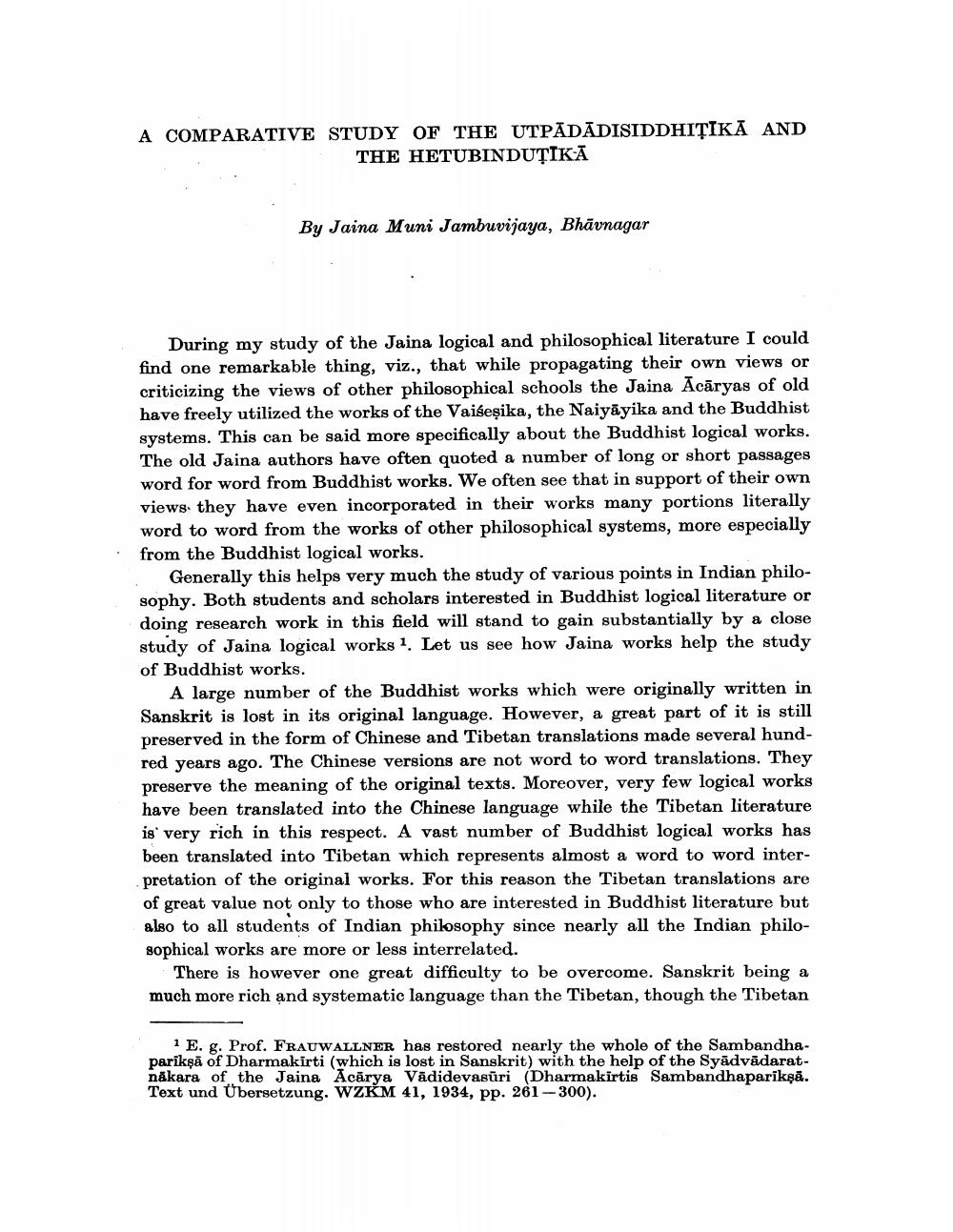Book Title: Comparative Study Of Utpadadisiddhitika And Hetubindutika Author(s): Jambuvijay Publisher: Jambuvijay View full book textPage 1
________________ A COMPARATIVE STUDY OF THE UTPĀDĀDISIDDHIȚIKĀ AND THE HETUBINDUTIKĀ By Jaina Muni Jambuvijaya, Bhāvnagar During my study of the Jaina logical and philosophical literature I could find one remarkable thing, viz., that while propagating their own views or criticizing the views of other philosophical schools the Jaina Ācāryas of old have freely utilized the works of the Vaiseșika, the Naiyāyika and the Buddhist systems. This can be said more specifically about the Buddhist logical works. The old Jaina authors have often quoted a number of long or short passages word for word from Buddhist works. We often see that in support of their own views. they have even incorporated in their works many portions literally word to word from the works of other philosophical systems, more especially from the Buddhist logical works. Generally this helps very much the study of various points in Indian philosophy. Both students and scholars interested in Buddhist logical literature or doing research work in this field will stand to gain substantially by a close study of Jaina logical works 1. Let us see how Jaina works help the study of Buddhist works. A large number of the Buddhist works which were originally written in Sanskrit is lost in its original language. However, a great part of it is still preserved in the form of Chinese and Tibetan translations made several hundred years ago. The Chinese versions are not word to word translations. They preserve the meaning of the original texts. Moreover, very few logical works have been translated into the Chinese language while the Tibetan literature is very rich in this respect. A vast number of Buddhist logical works has been translated into Tibetan which represents almost a word to word interpretation of the original works. For this reason the Tibetan translations are of great value not only to those who are interested in Buddhist literature but also to all students of Indian philosophy since nearly all the Indian philosophical works are more or less interrelated. There is however one great difficulty to be overcome. Sanskrit being a much more rich and systematic language than the Tibetan, though the Tibetan 1 E. g. Prof. FRAUWALLNER has restored nearly the whole of the Sambandhapariksā of Dharmakirti (which is lost in Sanskrit) with the help of the Syädvādaratnäkara of the Jaina Acārya Vädidevasūri (Dharmakirtis Sambandhaparikşā. Text und Übersetzung. WZKM 41, 1934, pp. 261-300).Page Navigation
1 2 3 4 5
